Walk up to 15-20 minutes in any direction in Vilnius, and you’ll experience a completely different vibe. You can see history, people and architecture. Whether it’s Užupis, Šnipiškės or Žvėrynas, every single area has a unique draw.
So to get to know Vilnius even better, we’ve decided to focus on exploring a new neighbourhood every month. In this post, we’ll cover Žvėrynas, and if the place sounds unheard of, it’s precisely why this part of the city should be on your radar.
This time, our walking tour was curated and led by a professional guide Milisenta. Within less than two hours, she introduced us to the history of the district, shown through most prominent sights and shared some truly unique facts. Oh boy, there was so much I didn’t know about the area!
Located on the right bank of Neris, Žvėrynas is often named as the greenest and prettiest area in town. The name Žvėrynas goes all the way back to the 15-16th century as the land was known to be a hunting district for the noble family of Radvilai.
You can reach the neighbourhood on foot, simply by crossing the bridge of Žvėrynas. Once you get to the other side, it’s as though the entire area is a time capsule, featuring elaborate green spaces, authentic wooden architecture, cultural monuments, and more.
Trust me, there’s a lot to see and do in Žvėrynas that combines both history and present day. A whole afternoon might be spent there, and you might even forget that you’re still in Vilnius.
To help you explore Žvėrynas with ease, here are the 13 must-see places. You can see them in order, or you can choose the ones that stand out to you.
1. Kenesa
There must be people who are passing by the exotically-shaped building and wondering what the building actually is. I have to admit; I was one of them. The religious connotation is pretty apparent, but what else does its history has to unveil?

The building is called Kenesa, which is an equivalent of a house of prayer for the local ethnic minority of the Lithuanian Karaite. The church is one of the two remaining buildings of its kind in Lithuania, and it was opened in 1923.
2. Radio Station
If you’re a melomaniac, this object will pique your interest. Close to the Žvėrynas bridge, one can quickly notice the very first building of Vilnius radio station is located. The radio was established back in 1927 and was operating up until 1935.

Do you know what the sound of cuckoo has to do with this radio station? Props to you, if you do! For over a decade, the sound was the opening slogan sound of the radio. The station purposefully fostered Lithuanian culture and broadcasted lectures as well as concerts.
3. Liubarto and Žvėrynas Bridges
Liubarto bridge was built in 1987 to help the bridge of Žvėrynas cope with the growth of traffic, which was first built in 1907 and reconstructed in 2006. When you walk across it, the bridge offers some stunning views of the banks of Neris, especially in the springtime.
4. Eduardo Balsys Square
The square of Eduardas Balsys is another lesser-known spot worthy of a visit. The public space was completed in 2013, and the idea of it was to make the square an attraction and the observation point of Vilnius. The focal point of this public square is a sculpture called Paukščių Lizdas, created in appreciation of the composer Eduardas Balsys.
5. The Church of Revelation of the Holy Mother of God
Due to increasing Orthodox population in the area in the 19th century, a piece of land was gifted and collections were made for the community to build this church.
The Byzantine architectural type of the Orthodox church was pretty typical at the time. Also, right next to it, there were several other significant buildings for the community: an orphanage, a school and a library.
6. Wooden Architecture
As a child, I spent most of my summers in Kaunas. So every time I stroll around in an undiscovered part of Žvėrynas, it’s like I’m experiencing a déjà vu—some of the architecture is so reminiscent of Žaliakalnis.



7. The Composers’ House
Tucked in a relatively secluded part of the neighbourhood, Kompozitorių Namai (the Composers’ House) is yet another gem worth checking out.
The Scandinavian-style house and the apartment block close by were a project carried on by Vytautas E. Čekanauskas. They are considered to be one of the prime examples of post-war modern architecture in Lithuania.

8. Film Studio
The very first masonry building in Žvėrynas was constructed as early as 1860. However, that’s not the only reason to visit it. The building had a rich history of hosting “Triumf,”—a wealthy underwear factory, and then during the Soviet times, it was home to a not less exciting venture—Lithuanian Film Studio.
9. The Church-Chapel of St. Martyr Ekaterina
Whenever you’re heading to Vingis Park for a run, peek inside the tiny St. Jakaterina’s Church chapel. Located on Birutės Street, the chapel was built in memoriam of the wife of Governor General Alexander Potapov, whose name was Jekaterina, and noted for her long-standing charitable efforts.
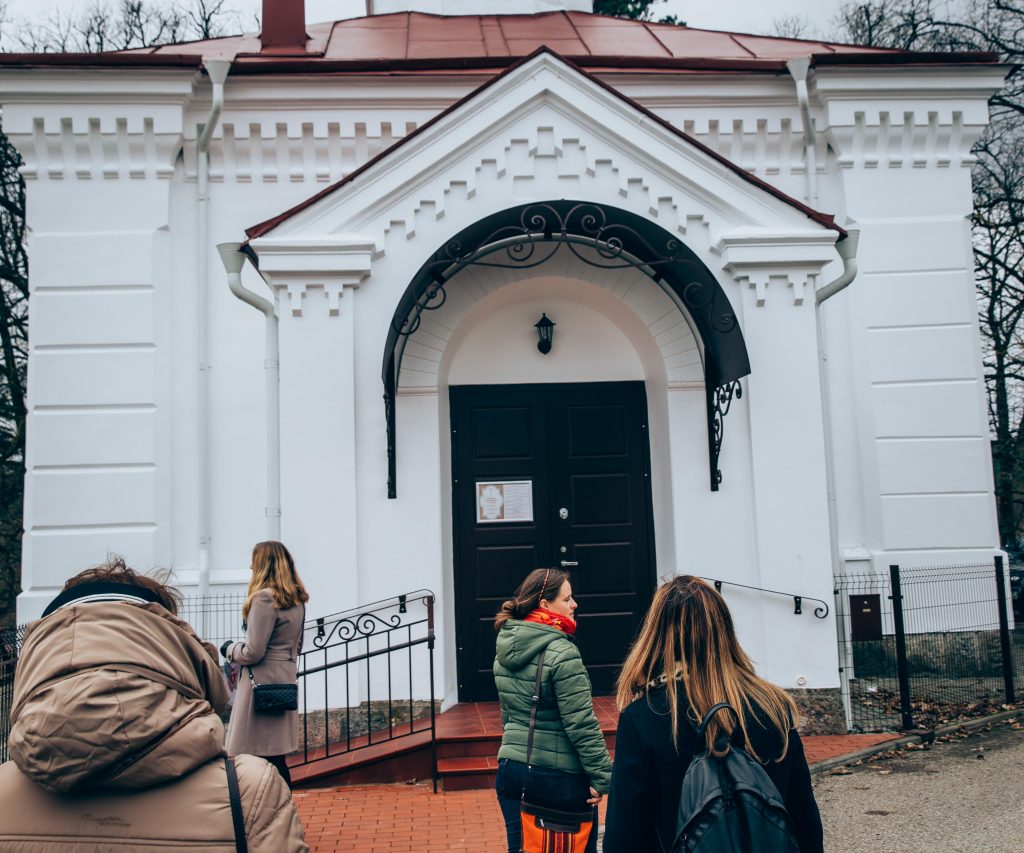
10. The House of Pops
This distinctively embellished wooden house with elaborate carvings was built in 1901. Ever since then, the primary purpose of the building was to serve as a home to the Orthodox popes.
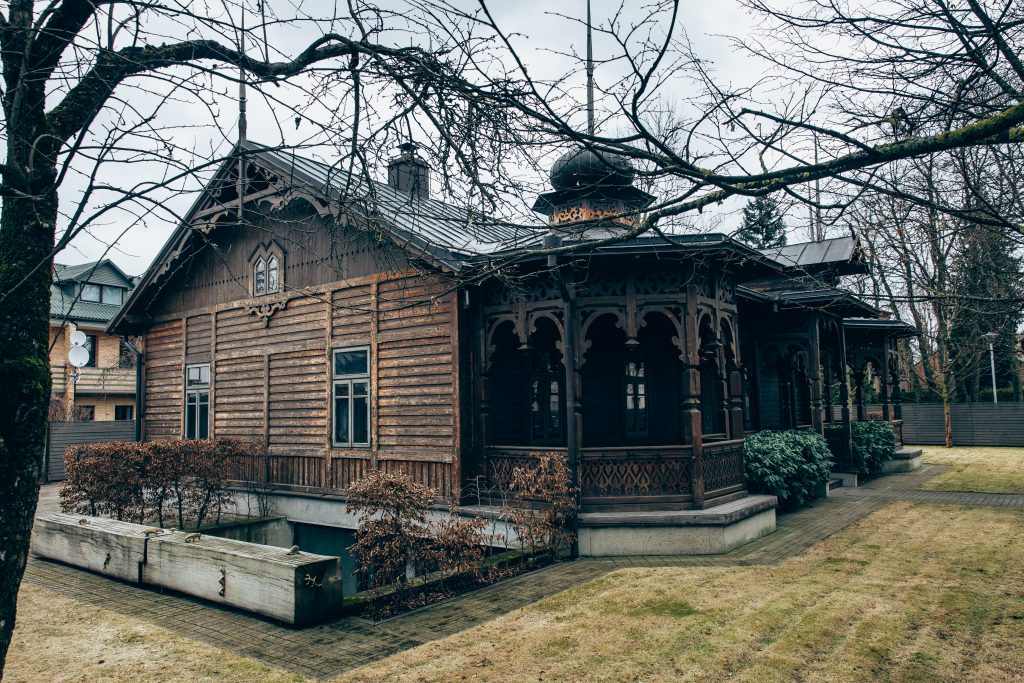
In 2008, the house was rebuilt, and according to the Lithuanian Society of Art Historians, it was awarded as the best reconstruction (among historical developments).
11. Žvėrynas Park and Mill
There’s no such thing as too much greenery in Žvėrynas. In the 18th century, this part of the area was converted into a park with beautiful flora and fauna. Also, the two ponds remain in Žvėrynas park up till now.
The ponds are supplemented with springs, of which the water flows into the Neris. Adjacent to the park, there’s a water mill—the oldest building in the neighbourhood.
12. The Narrow-Gauge Railway
These days it looks as if it’s only a gravel track leading to the forest, it used to serve as a strategic point during the Interwar Years—it was a narrow-gauge railway used for military purposes, in particular, to strengthen fortification.
13. Chirping Cross
An unusual outdoor installation called Čiulbantis kryžius (Chirping cross) is a creation of an artist Gitenis Ubrasas. The installation is made out of 40 nesting-boxes and is 7 meters tall. The cross is also a part of a larger art project called Paukščių Takas (Milky Way).
Is there a neighbourhood that you’d like to read about next? Let us know in the comments below.
P.S. Thank you Lukas for being our photo-whizz during this tour!
Contents
- 1 1. Kenesa
- 2 2. Radio Station
- 3 3. Liubarto and Žvėrynas Bridges
- 4 4. Eduardo Balsys Square
- 5 5. The Church of Revelation of the Holy Mother of God
- 6 6. Wooden Architecture
- 7 7. The Composers’ House
- 8 8. Film Studio
- 9 9. The Church-Chapel of St. Martyr Ekaterina
- 10 10. The House of Pops
- 11 11. Žvėrynas Park and Mill
- 12 12. The Narrow-Gauge Railway
- 13 13. Chirping Cross

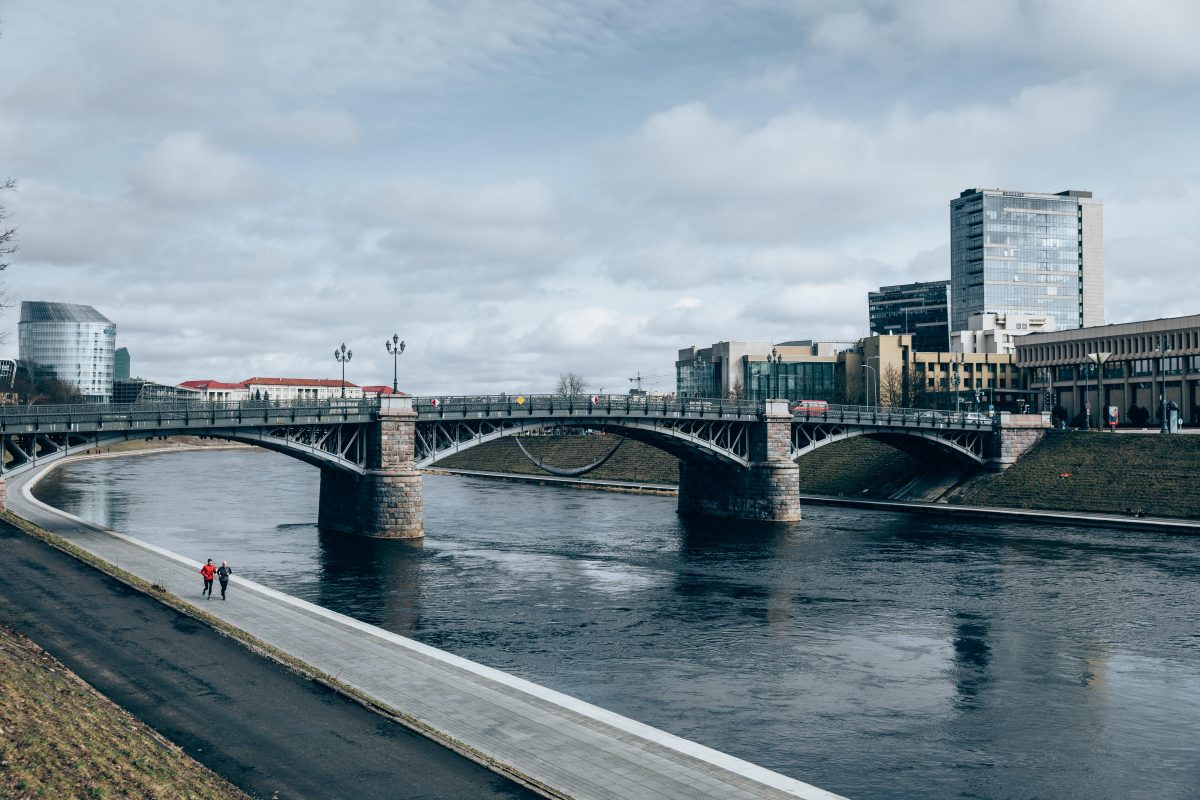

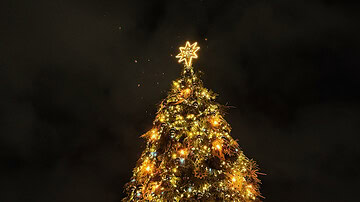
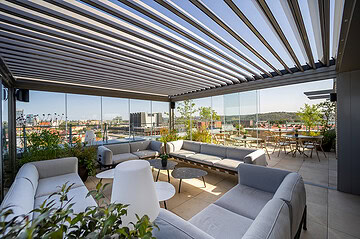
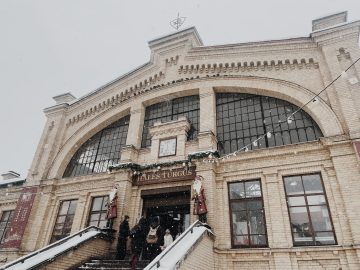
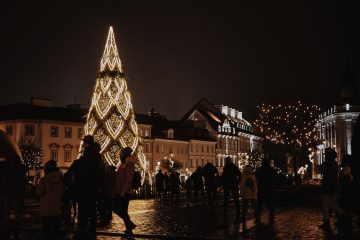
Pingback: 20 Best Places for a Delightful Brunch in Vilnius
Pingback: Events in Vilnius to Look Forward to | VP